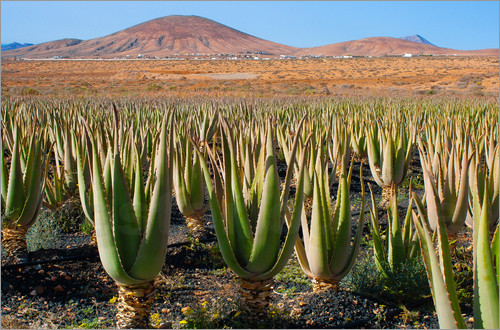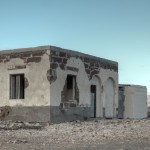THE TRIBUTE OF BLOOD
An article by Bernie Power with The Voice Fuerteventura
I was waiting at the bus stop to leave Corralejo the other day, when a man stopped and asked me what the word Gua Gua, pronounced “WaWa” meant that was written on the road.
He was English but spoke Spanish too as he lives in Gerona. He had never seen it before and didn’t realise that it indicates a Bus Stop here in the Canary Islands and is the word they use to describe a bus or coach. Although its actual origin is sketchy, it possibly comes from a short form of the word “Wagon” or from the noise or “WaWa” that the Klaxon used to make when announcing its arrival. This word is also used to describe a bus in many other parts of the world and is just one of a number of local Canarian words which have been transported across to the Amercias.
ACROSS THE POND
There are many local Canarian words and they have found their way across the pond, as well as other local specialties and customs. For example; Gofio, which is a kind of local maize used in cooking, mojo which is tasty hot sauce popular in Cuba and ropa vieja which is a local stew that actually means old clothes and refers to whatever ingredients they fancy adding at the time. These words and many more went with the thousands of people who emigrated in the 1800s. An estimated 50,000 people moved from the Canaries and went to Venezuela and whole villages were emptied of young men who went to populate the Spanish colonies. In 1780, 21,000 went to Louisiana in the U.S because they needed Spanish colonists and the Canarian folk were thought to be tough and hard working. Cuba was also a magnet for the Canarians and for 86 years (until 1764) there was a scheme in place where for every ton of goods imported – the ship had to carry back at least five families. This was known as El Tributo de Sangre or The tribute of blood.
IMMIGRATION
Immigration didn’t stop until the Cubans went to war with America, or vice-versa, and then it was banned. Many of the empty ruined houses that you see dotted around the island were left by local people or Majoreros who escaped drought and famine, which occurred frequently back then. After the Spanish civil war, Fuerteventura sort of fell of the map and was all but forgotten and once again people started to leave. This time Venezuela, Puerto Rico and Uruguay were the countries of choice. Many eventually returned and brought a portion of the Latino vocabulary with them, which added a touch of spice to our language that we use today. Since the early 80’s the trend has reversed and many of the old fincas or farm houses and fields have been restored, but this time by new immigrants arriving from Germany, The UK, Italy and other areas of Europe who have decided to come and live on the island.
LOS ISLEÑOS
With our permanent supply of water provided by the wind powered desalination plant in Corralejo, agriculture is returning to the island, and the fields are once again showing signs of growth and cultivation. This is particularly noticeable if you head inland and drive though the centre of the island. Plants that are particularly suited to the climate are thriving, such as Aloe Vera, and there is much work going behind the scenes to re-cultivate species that have been lost over the years. Fuerteventura is a very special place and one which often finds a space in most people’s hearts. Even those thousands that emigrated all that time ago, still struggle to leave Fuerteventura behind and even though have integrated into their new country and cultures, are still known Los Islenos or the Islanders today. And In order to differentiate between the two, people from mainland Spain are known as the peninsulars.
 The Voice – Fuerteventura Keep up to date in Fuerteventura with The Voice Magazine
The Voice – Fuerteventura Keep up to date in Fuerteventura with The Voice Magazine






